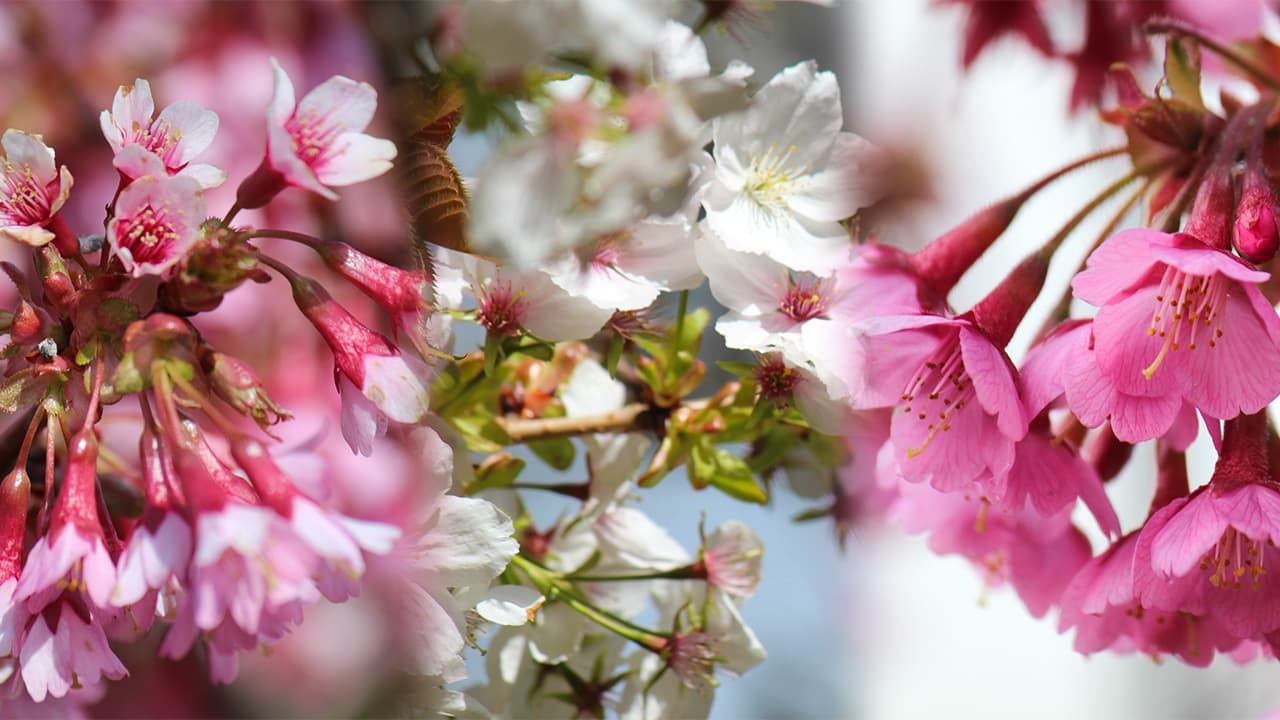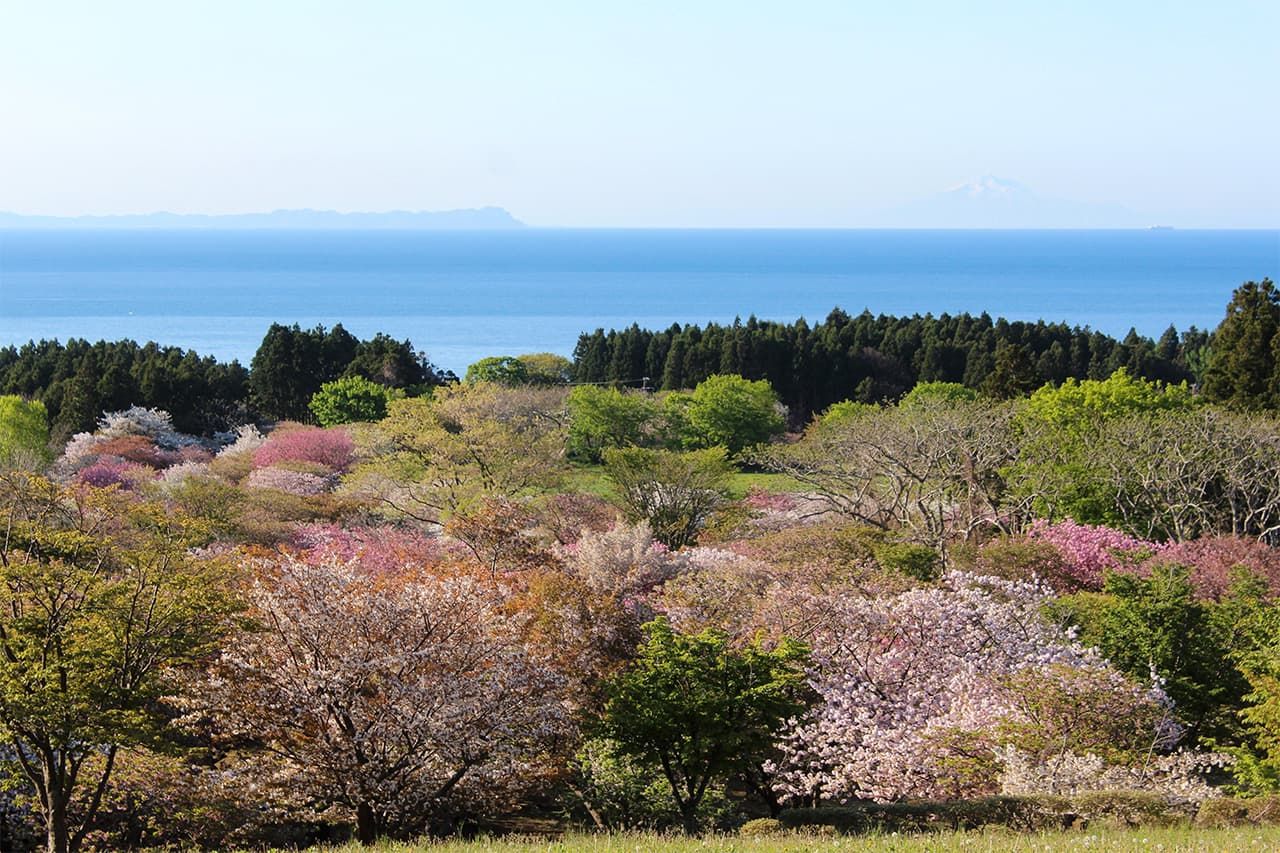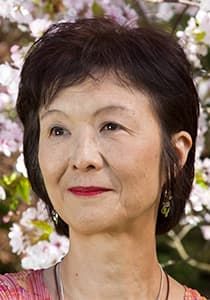
A Talk with the Author of “‘Cherry’ Ingram: The Englishman Who Saved Japan’s Blossoms”
Culture History Books- English
- 日本語
- 简体字
- 繁體字
- Français
- Español
- العربية
- Русский

Collingwood “Cherry” Ingram (Courtesy of the Ingram Family)
There is little more quintessentially Japanese than cherry blossoms. So it comes as a surprise—a shock, even—to learn that decades of neglect of this national treasure in the latter part of the 1800s made a single strain almost ubiquitous and left the majority of the dozens of different varieties of ornamental cherry tree on the verge of being lost forever.
Even more of a surprise is that it was a British horticulturist who intervened to halt the precipitous decline of the delicate flowers that are the symbol of a Japanese springtime, and that he had been largely overlooked by history until very recently.
Looking to Britain for Cherry Diversity
That “Cherry” Ingram is remembered today is in no small part down to Abe Naoko, a journalist and nonfiction writer who has lived in London since 2001. Her book Cherī Inguramu: Nihon no sakura o sukutta Igirisujin won the prestigious Nihon Essayist Club Award in 2016, was released in English in 2019 as “Cherry” Ingram: The Englishman who Saved Japan’s Blossoms, and has since been translated into six other languages including Chinese and Spanish.
“When I first came to live in England, I was surprised every spring to see so many cherry trees in blossom all over the country, in parks, on streets, and in people’s gardens,” says Abe, who now lives in Epsom Downs, just outside London.
“And every spring, all my Japanese friends would ask each other why there are so many different varieties and why the cherry blossom season seemed to last far longer than in Japan.”

‘Taihaku’ at the Ainwick Garden, Northumberland, where a memorial ceremony is held each spring. (Courtesy of Margaret Whittaker)
Fell in Love with Japan
In Japan, up to 90% of urban cherry trees today are the ‘Somei-yoshino’ variety, she notes, but in Britain there are many different types. Some have deeper colors to their petals, while others are much paler; the shapes of the flowers can vary markedly; and with so many varieties, the time between the very earliest to bloom, at the beginning of March, and the very latest in mid-May extends the season over several months.
In Japan, in contrast, the pale pink petals of the dominant ‘Somei-yoshino’ trees bloom and disappear within a maximum of two weeks in any one location.
Britain’s cherry blossom bounty is thanks to Collingwood “Cherry” Ingram, a man whom Abe describes as single-minded and eccentric for his obsession with the flower.
A son of Sir William Ingram, a member of parliament and managing director of the Illustrated London News, Ingram was born in London in 1880. In his youth, he was fascinated with birds. He devoted all of his spare time to identifying and sketching the different species near the family’s country house in the Kentish village of Westgate-on-Sea. By the late 1890s, his interests had expanded to Japan.

Collingwood Ingram dressed for a hunt, aged about 16. (Courtesy of the Ingram family)
He arrived in Nagasaki on a first trip in September 1902 and immediately fell in love with the countryside, although he was less impressed by the teeming and polluted cities. Ingram returned for a second visit in 1907, by this time married, and went on expeditions searching for rare bird species. After serving as an officer in World War I, he purchased the Grange, an expansive traditional home in the Kent village of Benenden. The house had been built by Gathorne Gathorne-Hardy, a politician who took the title Lord Cranbrook in 1878, and was a prominent landowner.

The Grange in spring 2015. Now an assisted-living home, it includes grounds featuring 40 Matsumae cherry trees planted to mark the millennium. (© Abe Naoko)
By chance, two mature ornamental cherry trees of the ‘Hokusai’ variety stood in the grounds of the garden at the Grange and, as soon as they were in full bloom, bewitched Ingram. It was the start of a lifelong obsession as he set himself the ambitious target of documenting all the species of cherry blossom native to Japan, as well as creating new varieties such as ‘Okame’ and ‘Umineko’ by artificial hybridization. At one point, Ingram had no fewer than 130 types of cherry tree in his garden.

A ‘Taihaku’ blooms at the Grange. (© Abe Naoko)

‘Okame’ (left) and ‘Umineko’, named by Ingram after the black-tailed seagull common in Japan. (© Abe Naoko)
Ingram’s third—and final—trip to Japan was in 1926, when he spent seven weeks scouring the country from Kyūshū to Kyoto, Hakone, and Tokyo for rare and obscure varieties of cherry tree and making life-long connections with Japanese experts and fellow horticulturists who shared his passion for the plants. It was, however, a bittersweet pilgrimage.
Ingram was deeply disappointed to discover that instead of the dozens of different cherry trees that he had seen on previous visits, the ‘‘Somei-yoshino’’ had become ubiquitous, and many varieties were nowhere to be found. And very few ordinary Japanese seemed to realize or care.
The Taihaku Homecoming
Yet there were still discoveries to be made. Japan’s foremost cherry expert, Funatsu Seisaku, showed Ingram a scroll of a cherry tree that his great-grandfather had painted around 130 years previously, but sadly the tree type had since appeared to have become extinct. Ingram was able to reassure Funatsu that it had not disappeared entirely, though, as one of these very trees was thriving in his garden in Kent. And he vowed to return an offspring of his own tree to its homeland.

Funatsu Seisaku, photographed by Ingram in 1926. (Courtesy of the Ingram family)
Initial efforts in the years after Ingram returned home failed, as the cuttings did not survive the long sea journey through warm climes. In 1932, however, for the fifth trial, Ingram embedded the exposed ends of the branches in split potatoes, to provide moisture, and sent the consignment via the cooler Trans-Siberian Express route. The cuttings survived the journey, and the lost variety was successfully reintroduced to Japan.

A ‘Taihaku’ at the Grange. (© Abe Naoko)
A Disturbing Sakura Ideology
Ingram was horrified at the industrialization that had scarred so much of Japan’s natural beauty in the name of catching up with the advanced states of the West, but also at the emergence of naked nationalism. Most shocking of all was the way in which the military-led government had co-opted the cherry blossom from being the subject of peaceful poetry and artistic appreciation in centuries gone by to a symbol of willingness to die in battle for the emperor.
Japanese militarism and nationalism intensified in the 1930s, culminating in the outbreak of the Pacific phase of World War II and, ultimately, Japan’s defeat in 1945.

A page from Ingram’s notebook describing the ‘Taihaku’. (Courtesy of the Ingram family)
Abe believes Japan’s tight focus on a singularity in its political aims in the early decades of the last century were mirrored in its fixation on the ‘Somei-yoshino’ variety of cherry trees, adding that Ingram had warned Japan that the country was on the cusp of losing its cherry tree diversity.
“During his visit in 1926, he warned that the diversity that the nation’s ancestors had worked so hard to develop was fading,” she said. “And it is not much of an exaggeration to say that if he had not encouraged them to act, then in fifty years’ time they would have to travel to an English garden to see cherry blossoms.”
Unfortunately, she says, the vast majority of planted cherry trees in Japan are ‘Somei-yoshino’, and one has to search for alternative varieties. Some have undoubtedly died out entirely.
“Most people today do not really care all that much as ‘Somei-yoshino’ are quite beautiful,” Abe says. “As an added bonus, they grow quickly, are easy to propagate, and the blossoms emerge before the leaves, which helps to create this magical pink cloud when they are in bloom.”

‘Somei-yoshino’ blossoms along the moat at Takada Castle Site Park in Jōetsu, Niigata. (© Pixta)
Cherries of Reconciliation
In the latter years of World War II, hundreds of Allied prisoners of war who had been captured at the fall of Malaya and Singapore were put to work in mines, shipyards, and other industrial facilities across Japan, often in appalling conditions and with little food or medical assistance. As a boy, Asari Masatoshi heard stories from his brother about the pitiful conditions of POWs held at a camp near their home in Hakodate, Hokkaidō.

Asari Masatoshi. (© Abe Naoko)
While working as an elementary school teacher, Asari became one of Japan’s leading experts on cherry blossoms—and was a big admirer of “Cherry” Ingram. In 1993, he unexpectedly received a request for 30 kinds of Matsumae cherry trees from a British horticulturist who had been tasked with importing new varieties to be planted at Windsor Great Park, the British royal family’s home just outside London.
Asari refused to accept payment for the trees that were to travel to England, instead saying it was his way of expressing his “sincere condolences and regrets to those who lost their lives during the war, and their bereaved families.”
Forty of the trees eventually found their way to the Grange, albeit long after Ingram’s death, and were planted to mark the millennium.
It is a curious circular aside to the tale of how so many of Japan’s cherry trees took root in England, but by no means the only one.

Cherries in bloom at Hokkaidō’s Matsumae Park. (© Abe Naoko)
Cherry Soft Power
Britons also have an affection for the flowers, says Abe.
“I would say that most people love them, in part because they start to bloom after a long, grey English winter and they are so pretty that it can only cheer people up,” she said. Britons are also very aware of the connection cherry blossoms have with Japan, with Abe invited to give dozens of speeches and presentations across the country since her book was published.

Abe’s book in Japanese and English (© Nippon.com)
“I think that cherry blossoms are a form of Japanese ‘soft power,’” she adds. “Japan has a global reputation for its films, manga, and food, so cherry blossoms are also potent examples of soft power, which Japan excels in as a pacifist nation.
“With the world marching toward greater confrontation, Japan has also started to prepare against threats in Asia by bolstering its defenses,” she points out. “However, I think Japanese soft power can play a major role in contributing to international peace and goodwill.”
“When I looked at how Japanese cherry trees spread through Britain, I felt strongly that the blossoms did a lot as ‘goodwill ambassadors’ to improve the country’s reputation,” Abe said. “As the trees appeared across the country and won appreciation, this led to greater interest in Japan and Japanese culture. We should not underestimate this power.”
Others share that desire for peace that can be demonstrated through cherry trees.

“Reconciliation cherries”: Matsumae varieties in a private nursery at Windsor Great Park. (© Abe Naoko)
An Expanding Cherry Circle
Jason Gathorne-Hardy is next in line for the title of Earl of Cranbrook, 130 years after the first earl and original owner of the Grange. He has a fascination with Ingram’s work and the natural world in general.
Gathorne-Hardy and Abe are due to travel to Japan during the upcoming Golden Week holidays in May and will travel to Hakodate to meet Asari and visit Matsumae Park, where Asari has planted more than 10,000 cherry trees of over 200 varieties. Gathorne-Hardy has also started work on a cherry garden dedicated to peace on his property in Suffolk.
“Cherry” Ingram died in May 1981 at the age of 100, with a late-blooming ‘Imose’ cherry shedding its pale pink petals outside the window of his bedroom at the Grange. It was the mature tree that he had discovered as a sapling at Kyoto’s Hirano Shrine in 1926 and introduced to Britain. He is buried alongside his wife, Florence, in the graveyard of nearby St George’s Church.

Cherries in bloom at Matsumae Park, Matsumae, Hokkaidō. (© Abe Naoko)
(Originally published in English. Banner photo: From left, the ‘Okame’, ‘Taihaku’, and ‘Kursar’ varieties show the diversity of the cherry. © Abe Naoko.)


